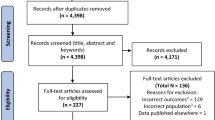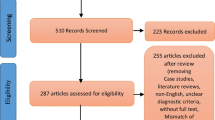Abstract
Aims
Visual hallucinations are common in medicationtreated Parkinson's disease (PD) patients. Although their etiology is unknown several factors seem to be involved in their pathogenesis. The aim of this study was to identify possible risk factors and determine clinical characteristics associated with the development of visual hallucinations in PD.
Methods
166 consecutive patients fulfilling clinical criteria for PD were studied. During a semi–structured interview, demographic characteristics and clinical variables were recorded. Motor, cognitive and psychiatric status was also assessed. Patients with and without visual hallucinations were compared using non–parametric tests, and logistic regression was applied to significant data.
Results
During the month before evaluation 20.4% of our patients experienced visual hallucinations (11.4% benign, 9% malignant). Logistic regression analysis identified three factors independently associated with visual hallucinations: long duration of Parkinson's disease, dementia, and disease severity as measured by the UPDRS total score.
Conclusions
Our findings indicate that apart from well established risk factors such as cognitive impairment and disease duration, disease severity is also important for the development of visual hallucinations in PD. Furthermore, the presence of bradykinesia and instability, the absence of tremor and the severity of rigidity and bradykinesia (limb and axial) may act as cofactors.
Similar content being viewed by others
References
Aarsland D, Ballard C, Larsen JP, et al. (2001) A comparative study of psychiatric symptoms in dementia with Lewy bodies and Parkinson's disease with and without dementia. Int J Geriatr Psychiatry 16(5):528–536
Aarsland D, Larsen JP, Cummins JL, et al. (1999) Prevalence and clinical correlates of psychotic symptoms in Parkinson disease:a community–based study. Arch Neurol 56(5):595–601
American Psychiatric Association (1987) Diagnostic and Statistical Manual for Psychiatric Disorders. Revised third edition (ed) American Psychiatric Association. Washington, DC
Barclay CL, Hildebrand K, Gray P, et al. (1997) Risk factors for the development of psychosis in Parkinson's disease. Mov Disord 12(Suppl. 1):108
Barnes J, David AS (2001) Visual hallucinations in Parkinson's disease:a review and phenomenological survey. J Neurol Neurosurg Psychiatry 70(6):727–733
Carter JH, Stewart BJ, Archbold PG, et al. (1998) Living with a person who has Parkinson's disease:the spouse's perspective by stage of disease. Parkinson's Study Group. Mov Disord 13(1):20–28
7. Fahn S, Elton RL, Committee (1987) MotUd, Unified Parkinson's disease rating scale in Recent developments in Parkinson's disease. Macmillan healthcare information, pp 153–163
Fenelon G, Mahieux F, Huon R, et al. (2000) Hallucinations in Parkinson's disease:prevalence, phenomenology and risk factors. Brain 123(Pt 4):733–745
Folstein MF, Folstein SE, McHugh PR (1975) "Mini–mental state". A practical method for grading the cognitive state of patients for the clinician. J Psychiatr Res 12(3):189–198
Goetz CG, Pappert EJ, Blasucci LM, et al. (1998) Intravenous levodopa in hallucinating Parkinson's disease patients:high–dose challenge does not precipitate hallucinations. Neurology 50(2):515–517
Goetz CG, Stebbins GT (1995) Mortality and hallucinations in nursing home patients with advanced Parkinson's disease. Neurology 45(4):669–671
Goetz CG, Stebbins GT (1993) Risk factors for nursing home placement in advanced Parkinson's disease. Neurology 43(11):2227–2229
Goetz CG, Vogel C, Tanner CM, et al. (1998) Early dopaminergic drug–induced hallucinations in parkinsonian patients. Neurology 51(3):811–814
Graham JM, Grunewald RA, Sagar HJ (1997) Hallucinosis in idiopathic Parkinson's disease. J Neurol Neurosurg Psychiatry 63(4):434–440
Hoehn MM, Yahr MD (1967) Parkinsonism: onset, progression and mortality. Neurology 17(5):427–442
Holroyd S (1996) Visual hallucinations in a geriatric psychiatry clinic:prevalence and associated diagnoses. J Geriatr Psychiatry Neurol 9(4):171–175
Holroyd S, Currie L, Wooten GF (2001) Prospective study of hallucinations and delusions in Parkinson's disease. J Neurol Neurosurg Psychiatry 70(6):734–738
Hughes AJ, Daniel SE, Kilford L, et al. (1992) Accuracy of clinical diagnosis of idiopathic Parkinson's disease:a clinico–pathological study of 100 cases (see comments). J Neurol Neurosurg Psychiatry 55(3):181–184
Inzelberg R, Kipervasser S, Korczyn AD (1998) Auditory hallucinations in Parkinson's disease. J Neurol Neurosurg Psychiatry 64(4):533–535
Ismail MS, Richard IH (2004) A reality test:How well do we understand psychosis in Parkinson's disease? J Neuropsychiatry Clin Neurosci 16(1):8–18
McKeith I, Mintzer J, Aarsland D, et al. (2004) Dementia with Lewy bodies. Lancet Neurol 3(1):19–28
McKeith IG, Fairbairn AF, Bothwell RA, et al. (1994) An evaluation of the predictive validity and inter–rater reliability of clinical diagnostic criteria for senile dementia of Lewy body type. Neurology 44(5):872–877
McKeith IG, Galasko D, Kosaka K, et al. (1996) Consensus guidelines for the clinical and pathologic diagnosis of dementia with Lewy bodies (DLB):report of the consortium on DLB international workshop. Neurology 47(5):1113–1124
Morris SK, Olichney JM, Corey–Bloom J (1998) Psychosis in Dementia With Lewy Bodies. Semin Clin Neuropsychiatry 3(1):51–60
Moskovitz C, Moses H, 3rd, Klawans HL (1978) Levodopa–induced psychosis:a kindling phenomenon. Am J Psychiatry 135(6):669–675
Naimark D, Jackson E, Rockwell E, et al. (1996) Psychotic symptoms in Parkinson's disease patients with dementia. J Am Geriatr Soc 44(3):296–299
Oertel WH (2000) Pergolide versus L–dopa (PELMOPET). Mov Disord. 15(Suppl. 3):4
Parkinson Study Group (2000) Pramipexole vs levodopa as initial treatment for Parkinson disease:A randomized controlled trial. Parkinson Study Group. JAMA 284(15):1931–1938
Perry EK, Marshall E, Kerwin J, et al. (1990) Evidence of a monoaminergiccholinergic imbalance related to visual hallucinations in Lewy body dementia. J Neurochem 55(4):1454–1456
Rascol O, Brooks DJ, Korczyn AD, et al. (2000) A five–year study of the incidence of dyskinesia in patients with early Parkinson's disease who were treated with ropinirole or levodopa. 056 Study Group. N Engl J Med 342(20):1484–1491
Richard IH, Papka M, Rubio A, et al. (2002) Parkinson's disease and dementia with Lewy bodies:one disease or two? Mov Disord 17(6):1161–1165
Rinne UK, Bracco F, Chouza C, et al. (1998) Early treatment of Parkinson's disease with cabergoline delays the onset of motor complications. Results of a double–blind levodopa controlled trial. The PKDS009 Study Group. Drugs 55(Suppl 1):23–30
Sanchez–Ramos JR, Ortoll R, Paulson GW (1996) Visual hallucinations associated with Parkinson disease. Arch Neurol 53(12):1265–1268
Schwab RS, England AC (1969) Projection technique for evaluating surgery in Parkinson's disease, in:Gillingham FD (ed) Third symposium of Parkinson's disease, IMl, Livingstone:Edinburgh, pp 152–157
Shergill SS, Walker Z, Le Katona C (1998) A preliminary investigation of laterality in Parkinson's disease and susceptibility to psychosis. J Neurol Neurosurg Psychiatry 65(4):610–611
Tanner CM, Vogel C, Goetz CG (1983) Hallucinations in Parkinson's disease:a population study. Ann Neurol 14:136
Wolters EC (1999) Dopaminomimetic psychosis in Parkinson's disease patients:diagnosis and treatment. Neurology 52(7 Suppl 3):S10–13
Author information
Authors and Affiliations
Corresponding author
Rights and permissions
About this article
Cite this article
Papapetropoulos, S., Argyriou, A.A. & Ellul, J. Factors associated with drug–induced visual hallucinations in Parkinson's disease. J Neurol 252, 1223–1228 (2005). https://doi.org/10.1007/s00415-005-0840-x
Received:
Revised:
Accepted:
Published:
Issue Date:
DOI: https://doi.org/10.1007/s00415-005-0840-x




